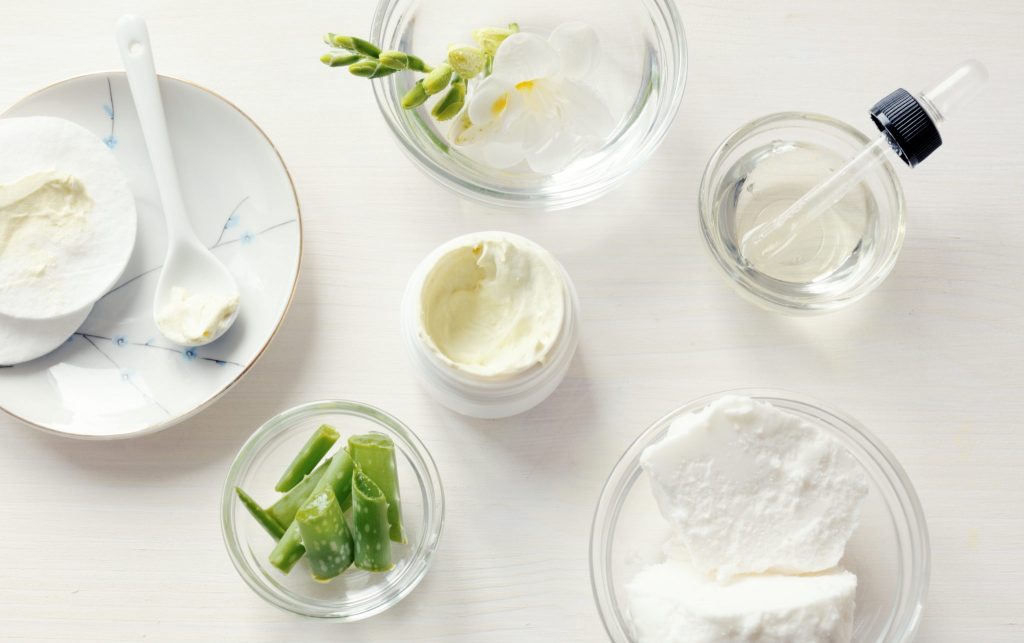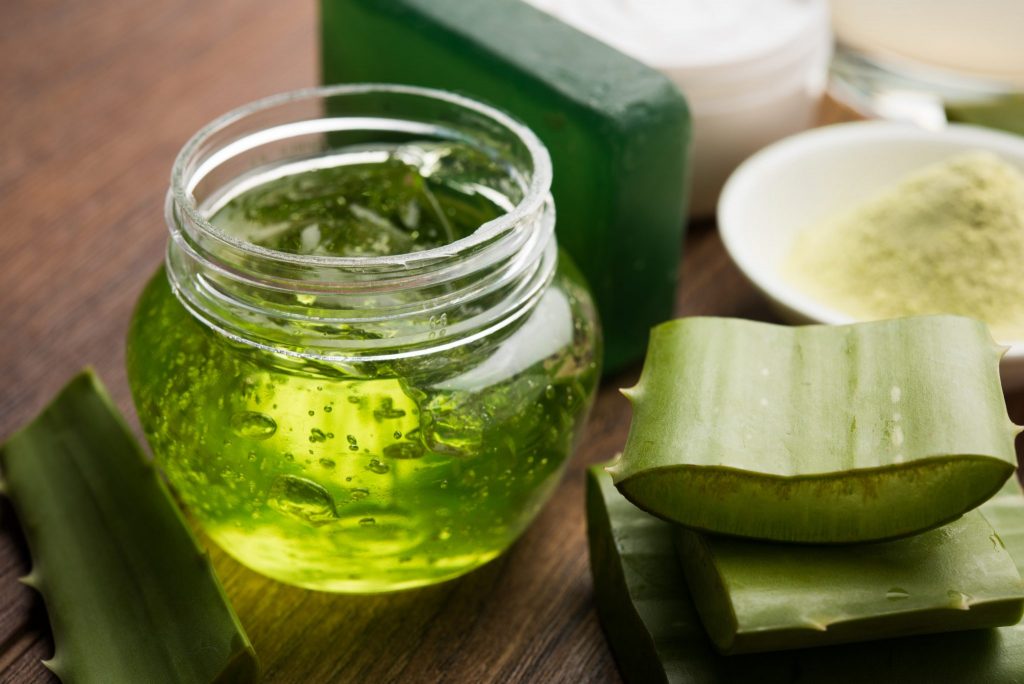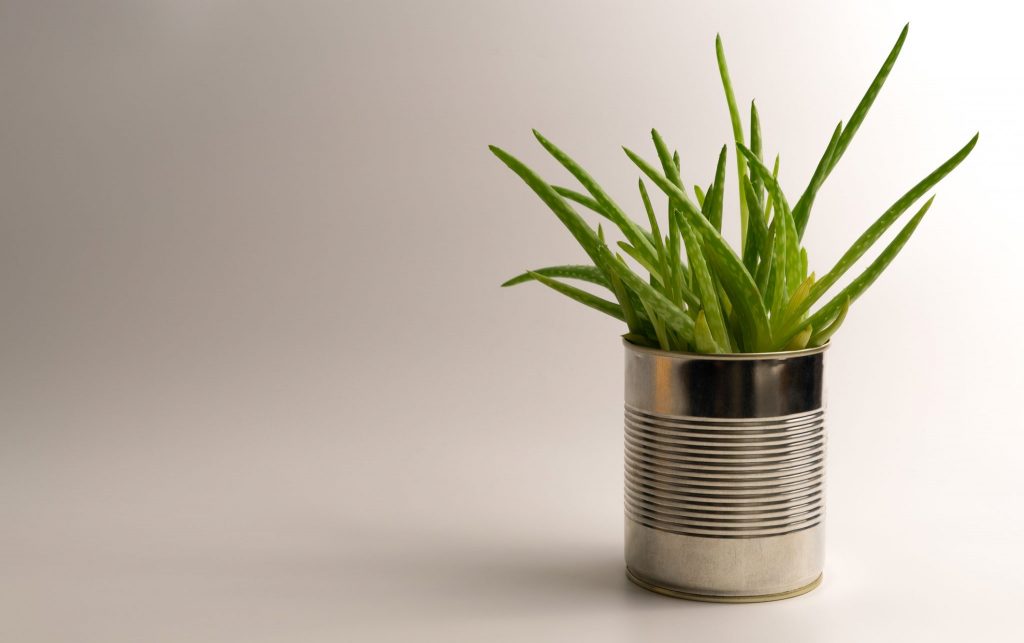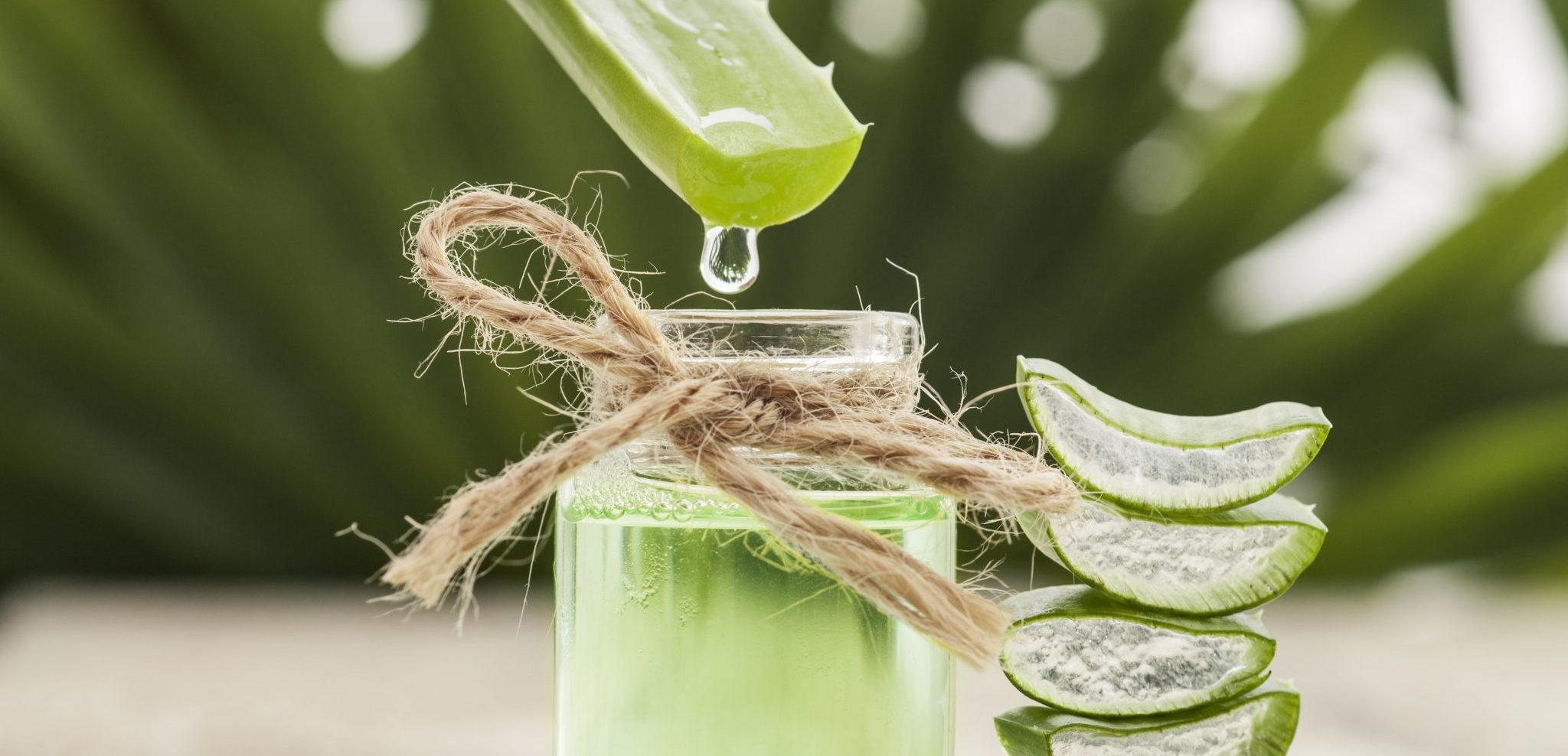Aloe vera has a long history. Even some 6,000 years ago, its nutrimental benefits were used by the Ancient Egyptians to heal the skin and maintain beauty. Known then as the “plant of eternity,” this spiky little green wonder was even employed in the empire’s famed after-death rituals. This was done with the belief that it would cleanse the body and help the person enter eternal life.
Fast forward to today, and we still see aloe vera is famed for its antibacterial and anti-fungal properties. It is widely used as a skincare treatment, particularly for those pesky summer sunburns. But its topical uses are not its only asset. People have long proclaimed the health benefits of eating aloe vera in various forms.
In this article, we’ll uncover exactly aloe vera is good for, including:
- How can aloe vera be used?
- Does aloe vera have nutritional benefits?
- Is it safe to use or consume or drink this plant?
- What forms does it come in?
- When it’s best avoided
Uses of aloe vera

To make the most of aloe’s healing and beautifying properties, you need to know how to use it effectively. Which can be difficult when there is so much conflicting information out there. Below we’ll help you get to grips with the most common ways to add this little green wonder to your life and how effective these treatments really are:
Acne and problematic skin
It’s no surprise that the medicinal value of aloe vera finds its spot as a treatment for acne. The common skin condition affects up to 80% of the population with suffers seeking relief by any means possible. Aloe vera helps by disinfecting the skin, while its antibacterial properties curtail the growth of bacteria. In addition, it’s known to soothe and reduce the appearance of those tell-tale symptoms.
Burns and sunburn
You’ve probably picked up a tube of after-sun cream proudly advertising aloe vera as one of its top ingredients, and it’s not without reason. The magical plant has been proven to help heal burn-based wounds faster than a Vaseline gel. So, the next time you sit too long in the sun or accidentally burn your hand in the oven, after running it under cold water head straight for the aloe vera.
Constipation
If you’ve ever experienced constipation, you know it’s no laughing matter going for days on end without a bowel movement. While over-the-counter solutions provide short-term relief (and definitely shouldn’t be a long-term solution – hello, lazy bowel!) and fiber is a long-term solution (which offers relief in the end but not right now), a third option is out there. Aloe vera, specifically its latex (more on that below), can be used as a laxative. However, before you go stripping that plant of its leaves exercise care and consult a doctor.
Diabetes
Managing blood sugar levels is a struggle for those with diabetes; it’s a constant battle between diet, exercise, and sometimes managing medication to keep those levels under control. In recent years, scientists have been placing increased attention to natural remedies. Our star is one of those.
It’s suggested that drinking aloe vera juice could help better regulate the condition by decreasing blood lipids and balancing glucose levels. Besides the internal benefits, using aloe gel can help treat the wounds and ulcers associated with the condition ensuring they are sterile and heal better. A word of warning, if you have diabetes, get in touch with your health care provider to ensure aloe vera’s suitability.
Genital herpes
Like the oral version, genital herpes is a result of the herpes simplex virus (HSV). The virus goes through active and inactive phases where sores are more apparent; usually, this happens at times of low immunity, illness, or other. Recent studies show that when the disease is active, and those symptoms are appearing that aloe’s healing properties could be just what the doctor ordered. While it won’t cure you completely, herpes is a chronic condition; it can reduce those symptoms and ease your discomfort.
Psoriasis
This immune system disorder can play significant havoc with your skin and joints, but the most noticeable symptom is that tell-tale rash. While there’s no “cure” on the market yet, aloe has been shown to reduce swelling during flare ups, helps to soothe your skin, and can provide some relief. This is likely due to its antibacterial and anti-inflammatory properties, which help reduce the outward effects of the condition.
Weight loss
Before you get too excited, drinking aloe vera juice for weight loss isn’t going to help you immediately drop 5lbs. But that’s not to say it doesn’t have some dietary benefits. The plant is packed with vitamins A, B, C, and E which can help boost your system, while its latex acts a laxative which may help regulate your gastroenterological system.
However, this is another use with care example; many aloe vera drinks are packed with sugars (which you don’t need) and drinking too much could leave you with a nasty case of diarrhea. So, if you decide to include a little into your diet, use with care.
It may also be effective for cancer, canker sores, dental plaque, diabetic foot ulcers, diaper rash, dry skin, frostbite, gum disease, high cholesterol, insect repellant, mouth inflammation, bedsores, scabies, dandruff, stretchmarks, ulcerative colitis, asthma, osteoarthritis and more. But the fact of the matter is we simply don’t have enough information to know, just yet.
Round-up: This green wonder can help you boost your health and resolve some minor medical issues from diabetes to sunburn to herpes; however, always consult a doctor before use to ensure it is suitable for you.
What makes up an aloe vera anyway?

Aloe Vera is a succulent, evergreen plant with long spiky leaves that are plump with gel. For those seeking its medicinal and healing properties, there are three parts of the plant you need to know:
The rind
This is the outer casing. Coming in tones of dark and light green, sometimes with white dots, the rind houses the gel and latex of the plant.
The gel
These are the cells inside the center of the lead, the almost transparent gel that you see when you cut into the rind. The gel is commonly used as a rub for burns, other skin conditions, and healing wounds.
The latex
Just under the rind, before you get to the gel, there is a thin layer; this is the latex. Aloe latex can be used as a laxative (with caution).
Types of aloe available
If you’ve been to a health food store recently, you’ve probably been amazed at the variety of products out there. Aloe vera comes in a variety of shapes, sizes, and forms. Let’s take a quick look:
The plant itself
Although native to a warm climate, aloe vera often does well in the home and grows effectively. If you treat it right, you can expect several new plants even within the first year or two. For those seeking to absorb its benefits, you can create drinks directly from the gel and latex (again with caution) or use the gel directly to treat burns and wounds. Even if you don’t intend to use it, it makes for a nice household decoration.
Drinks
Sold in many health-food stores, aloe vera juice is a drinkable liquid that you can add to your diet in small doses, this contains a much higher level of concentration that the alternative aloe-based beverages on sale in many supermarkets. These versions are often used as refreshments and may contain a lot of sugar.
Capsules
Often sold as a bowel-health improving supplement, aloe vera gel capsules benefits boast that they can aid in your digestive system and help with the care of your colon. Many people put their stock in this dietary supplement; however, medical feedback is lacking.
Gels and creams
From almost pure aloe gel to a cream with 5%, aloe vera is used in various concentrations in gels and creams that claim to treat everything from sunburn to cuts and other wounds. This is one of the most well-researched, safest applications of the plant, and generally comes with few side effects, that is, unless you have an allergy.
Who should not use aloe vera?

Unless you have an allergy or a condition that prevents you using an aloe vera gel or cream, this plant is considered a pretty safe option for minor skin ailments and other complaints that require a topical treatment.
For internal consumption, the results are less clear. Despite the many advertised benefits of aloe vera, recommendations on whether or not you should eat or drink this remedy remain mixed.
And that goes especially if you are:
- Pregnant or breastfeeding
- Suffer from kidney or liver disease
- Have Crohn’s disease or another bowel disorder
- Have hemorrhoids
- Are waiting for surgery
- Are under the age of 12
- Taking any medication for a health condition
In these cases, it is strongly advised that you consult with a doctor before consuming any aloe vera product as there is evidence to suggest that eating the plant and the plant’s products could lead to adverse side effects. So, we advise you to make the best decision for your health and ask your healthcare provider first.



